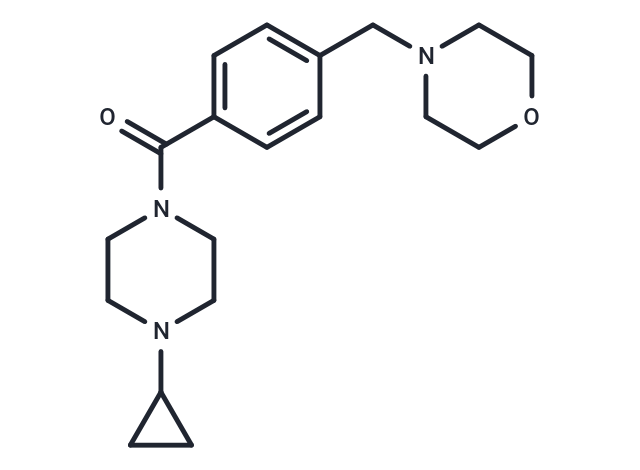Shopping Cart
- Remove All
 Your shopping cart is currently empty
Your shopping cart is currently empty

Bavisant (JNJ-31001074) is a selective and orally active Human H3 receptor antagonist. Bavisant can be used in research on mechanisms of action, involving wakefulness and cognition and the treatment for ADHD.

| Pack Size | Price | Availability | Quantity |
|---|---|---|---|
| 1 mg | $36 | In Stock | |
| 5 mg | $88 | In Stock | |
| 10 mg | $136 | In Stock | |
| 25 mg | $233 | In Stock | |
| 50 mg | $343 | In Stock | |
| 100 mg | $489 | In Stock | |
| 500 mg | Inquiry | In Stock | |
| 1 mL x 10 mM (in DMSO) | $95 | In Stock |
| Description | Bavisant (JNJ-31001074) is a selective and orally active Human H3 receptor antagonist. Bavisant can be used in research on mechanisms of action, involving wakefulness and cognition and the treatment for ADHD. |
| In vivo | Mean change from baseline in the total ADHD-RS-IV score at day 42 (primary efficacy endpoint) was -8.8 in the placebo group versus -9.3, -11.2, and -12.2 in the Bavisant 1 mg/day, 3 mg/day, and 10 mg/day groups, respectively; the change in the 10 mg/day group was not statistically superior to placebo, and hence statistical comparisons of the 1 mg/day and 3 mg/day groups with placebo based on a step-down closed testing procedure were not performed[1]. |
| Alias | JNJ-31001074 |
| Molecular Weight | 329.44 |
| Formula | C19H27N3O2 |
| Cas No. | 929622-08-2 |
| Smiles | C(=O)(N1CCN(CC1)C2CC2)C3=CC=C(CN4CCOCC4)C=C3 |
| Relative Density. | 1.220 g/cm3 (Predicted) |
| Storage | Powder: -20°C for 3 years | In solvent: -80°C for 1 year | Shipping with blue ice. | |||||||||||||||||||||||||
| Solubility Information | DMSO: 13 mg/mL (39.46 mM) | |||||||||||||||||||||||||
Solution Preparation Table | ||||||||||||||||||||||||||
DMSO
| ||||||||||||||||||||||||||

Copyright © 2015-2024 TargetMol Chemicals Inc. All Rights Reserved.